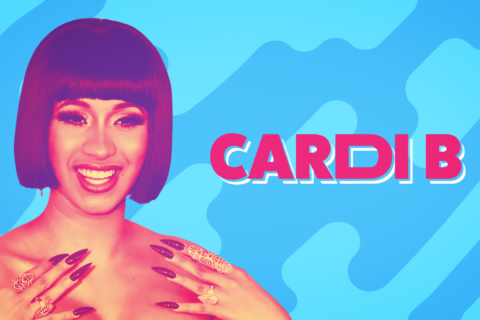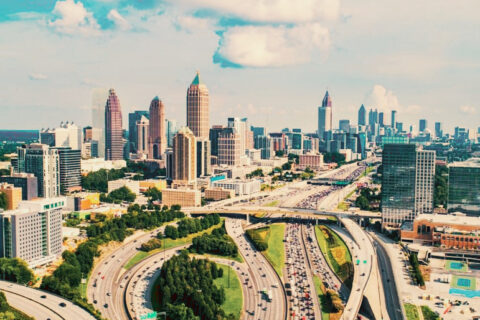In a piece of unsurprising, but still disappointing, news from the ever-feckless GOP, it has been announced that all but 14 members of Congress voted to make Juneteenth a national holiday. Before you try to take solace about those 14 Republicans who voted against it and against the party line, be aware that most of the ones who said why they voted against it gave stupid reasons. Anyway, with that piece of news, I thought now is as good a time as any to delve into the history behind another famous black symbol: Black Wall Street, also known as the Greenwood District of Tulsa, Oklahoma.
I don’t want to delve into the Tulsa Race Riots for which Greenwood is usually connected for the simple fact that there’s a lot of disinformation. All that is clear is that a 19-year-old black shoe shiner made a white girl scream in an elevator, he was arrested, one thing led to another, and 35 blocks ended up getting burned down.
The thing I find interesting about this event is that before the riots, this was considered one of the wealthiest black areas in the U.S. Why was it called “Black Wall Street,” though? Were they doing stock trading? Well, no. Apparently, some journalists just called it that and the name stuck. According to a New Jersey subsidiary of PBS (that doesn’t cite its sources), “Greenwood was home to a thriving Black commercial district, whose many red brick buildings belonged to Black Americans and housed thriving businesses, including grocery stores, banks, libraries, and much more; one of the most affluent African-American communities.” The actual report I found does not indicate a bank was in Greenwood or that there were any black owned banks, only that there were seven banks in the whole city.
According to page 189/200 of the Oklahoma Commission Report, Greenwood “contained 191 businesses prior to the Race Riot of 1921, which included 15 doctors, a chiropractor, 2 dentists, and 3 lawyers. The residents also had access to a library, 2 schools, a hospital, and a Tulsa Public Health Service… in 1921 there were 1,149 residences and most of them were occupied by more than one person–or even one family.” That’s a library singular (unlike what the PBS article asserts) and while the grocery stores aren’t mentioned, you would think the bank would be, if there were one.
Now, I don’t want to be overly critical. That account sounds like a relatively pleasant and prosperous middle-class area. The fact that some of the residences were occupied by more than one family makes it seem like there were definitely poorer parts of it, but as the report doesn’t assert how many of those residences were occupied by more than one family, let’s be charitable and assume that most of these residences were family homes or apartments, not slums where you have multiple families in a single apartment.
Nothing I read about that area makes me think “Wall Street,” though. Don’t get me wrong, it’s not like how some people try to malign it as a single street with a barbershop, a pawn shop, and a check cashing place. However, it’s also not, you know, Wall Street.
One takeaway is that this is a prime example of the racism of lower expectations. To equate Greenwood to “Wall Street” is frankly insulting and demeaning. Yes, you encourage a child with such things “ah, we have a little Michelangelo on our hands” when they show you a crude clay sculpture, but to do this to adults is horribly insulting. Blacks built a functional middle-class area and that should be commended, but not overstated.
The other takeaway is that Greenwood is basically the best African Americans can build. That’s not surprising. Comparing the best thing a population with an average IQ of 85 can build with the best a group with an average IQ of over 100 can build is going to show a stark contrast. You can also see this when you consider what the peoples of Europe made contemporaneously with peoples of other lands.
Mansa Musa, who is reported as the wealthiest man in history, is also famous for building the rather underwhelming Djinguereber Mosque (built in 1327 primarily of mud, straw, and wood). Compare that with Christ’s Church Cathedral in Oxford or Notre Dame (both built earlier) and you’ll be shocked to imagine which building was produced by the wealthier person. Likewise, it’s important to keep in mind that when people act impressed at the things built by the Aztecs, Oxford is older than that empire. There’s also the beautiful buildings of Greece and Rome, which only later Europeans and some Asians could try to rival and, in some cases, surpass.
As America becomes more “diverse,” we will probably see more areas that would be considered middle-class today referred to as “the [oppressed identity group] Wall Street.” Be aware that we won’t be building more stunning skylines of Manhattan, nor will we be building beautiful stone structures like in the Old World.
No, the best we’ll get is Greenwood.
A Southern man trying to make a good Southern plan.
Deo vindice!





